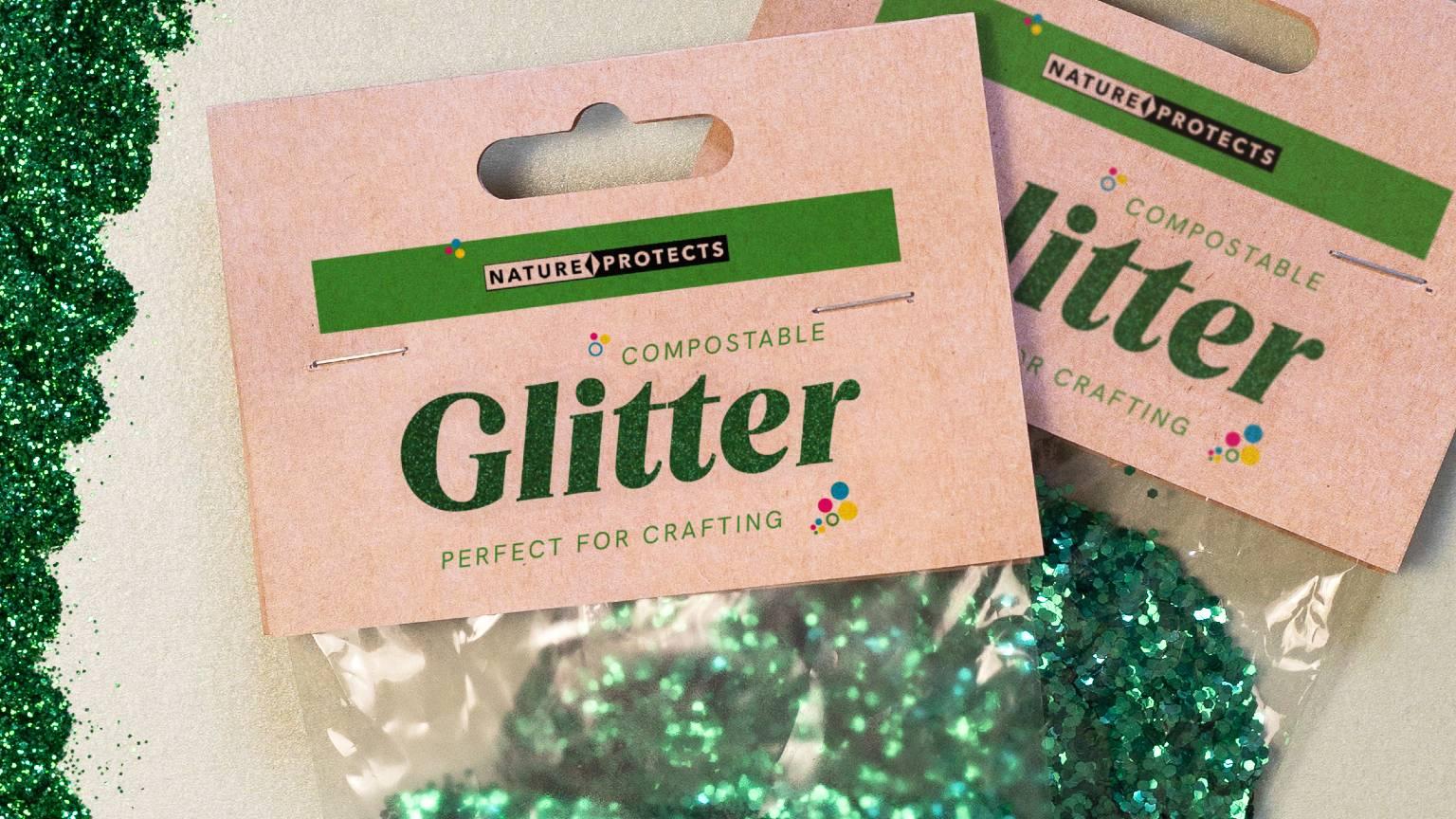Glitter has been criticised in recent years for its contribution to microplastic pollution in our oceans and soil. A report by ECHA (2020) suggests that 42,000 tonnes of intentionally present microplastics are released into the environment annually. The vast scale of the issue has led to a ban which came into effect on 17 October 2023, forbidding the sale of any non-biodegradable or insoluble plastic glitter for the arts and crafts markets. Glitter consists of inherently small particles, which in conventional polymer-based materials break down into even smaller particles called microplastics. The nature of the product means that glitter is likely to end up in wastewater, both for the cosmetic market as well as the arts and craft market.
Reducing the quantities of microplastics from glitter products
Futamura offers a solution to help reduce the vast quantities of microplastics generated from glitter products. Glitter can be based on NatureFlex films, which have demonstrated wastewater biodegradability, as well as biodegradability in marine and soil environments, a requirement of the REACH regulations that came into effect in October 2023, for the restrictions surrounding microplastics. After use, certified glitter will safely biodegrade in the environment it was disposed of, dramatically improving the environmental credentials of the product. Whilst NatureFlex films that can be used to produce glitter have proven marine and wastewater biodegradability, it is important for the glitter to be certified as a final product to ensure all the criteria of the certifications are met.
NatureFlex films are produced from renewable wood pulp, harvested from responsibly managed plantations and meet all the relevant standards for industrial composting, including AS4736, EN13432 and ASTM D6400. They are also certified for home composting according to the Australian home composting standard AS5810, to the French standard, NF T51-800, by Din Certco and to OK Compost Home protocol.
Transition period to end soon
Currently, glitter based on conventional plastics can still be sold into cosmetic applications due to the transition period granted under the Microplastics Regulation. However, once this period ends, cosmetic applications will also be banned from using glitter in products that will generate microplastics. The transition period in these industries has been approved to allow time for an appropriate alternative to be developed.
Andy Sweetman, Sales & Marketing Director, explained: “Glitter is a tricky market due to the product almost certainly ending up in the environment, whether wastewater, marine or soil. NatureFlex allows for a more viable, less damaging, end-of-life scenario than conventional glitter produced from conventional plastic materials. A switch to compostable glitter is a step towards reducing the ever-growing microplastic problem we are facing in our soils and seas today.”

